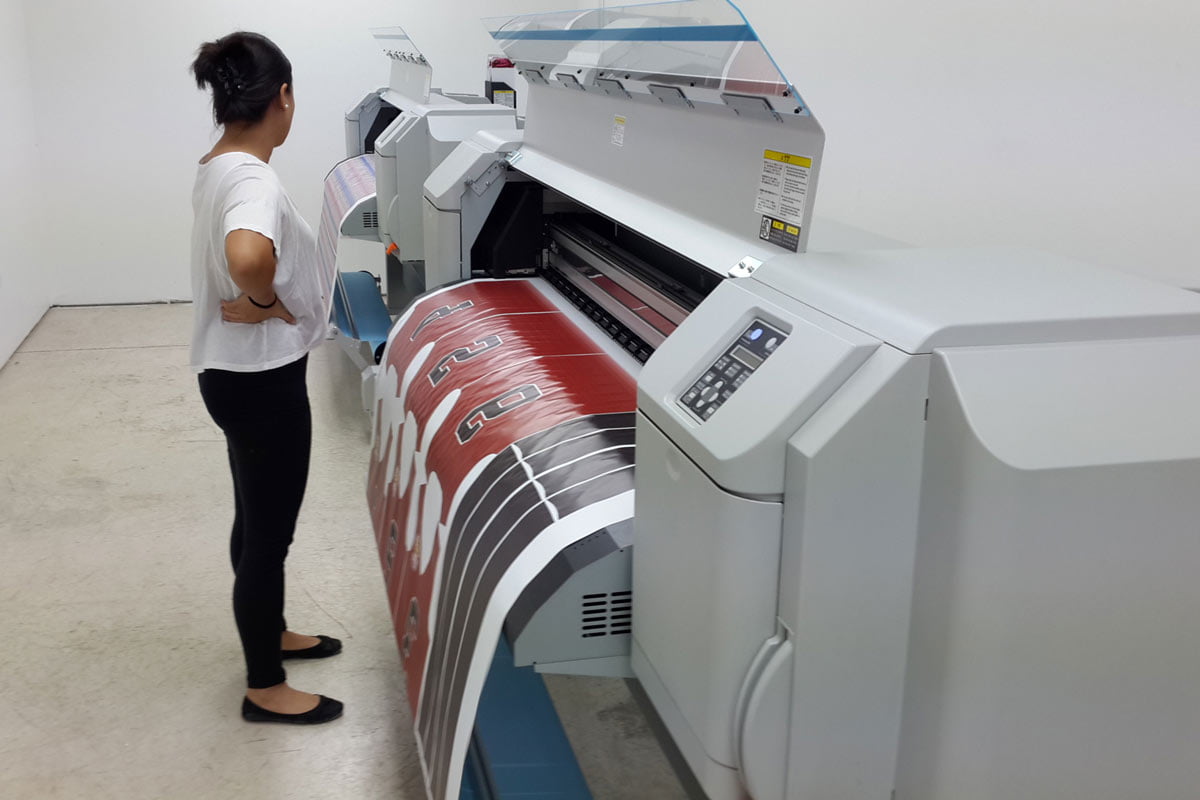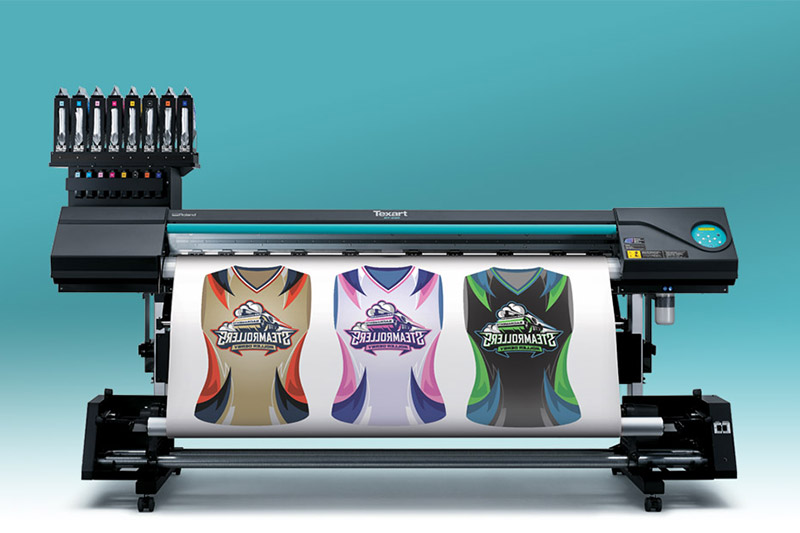Screen Printing Methods: Mastering the Art for Branded Clothing
Wiki Article
From Traditional to Digital: Understanding the Development of Fabric Printing
The makeover of cloth printing from standard techniques like block printing and withstand coloring to modern techniques such as display and electronic printing notes a considerable change in the fabric market. Exactly how do these developments affect the significance of towel printing, and what might the future hold for this ever-evolving craft?Typical Towel Printing Techniques
In the very early phases of textile production, standard cloth printing approaches served as the keystone of material layout, providing both capability and creative expression. Block printing, one of the earliest approaches, involved sculpting intricate styles into wood blocks, which were then dipped in dye and pushed onto textile.Stand up to dyeing, including methods like batik and tie-dye, used wax or other compounds to avoid color from passing through certain areas of the material. This method produced striking contrasts and detailed layouts, often imbued with social value. Stenciling, another traditional technique, entailed reducing patterns into a material and applying color with the openings, using a less complex yet effective way to create repeated layouts.
These traditional methods not only shaped the textile market's very early growth yet also prepared for future developments. Each strategy reflected the regional and cultural attributes of its beginning, preserving and disseminating artisanal knowledge through generations.
The Rise of Screen Printing
The arrival of display printing in the early 20th century noted a substantial separation from standard techniques, providing unprecedented convenience and efficiency. Screen printing enabled developers to create detailed patterns and vivid shades on fabrics, which were previously testing to achieve with block printing or hand-painting methods.Among the essential benefits of display printing is its ability to replicate intricate designs on a huge scale with exceptional fidelity. This scalability made it exceptionally popular in the business textile sector, where automation without sacrificing high quality is paramount. Display printing accommodates a vast range of inks and dyes, increasing the palette of appearances and surfaces readily available to designers.
Moreover, the procedure is extremely versatile, suitable for various textile kinds consisting of cotton, silk, and synthetics. This versatility, integrated with its cost-efficiency for large runs, solidified display printing's duty as a cornerstone of modern-day fabric manufacturing. Therefore, the surge of screen printing transformed the sector, pressing the limits of what was feasible in fabric layout.

The Introduction of Digital Printing
Building on the remarkable improvements brought by display printing, the fabric sector experienced an additional groundbreaking growth with the introduction of digital printing. Emerging in the late 20th century, digital printing transformed the method layouts are moved onto textiles, using extraordinary adaptability and efficiency. Unlike conventional methods, which commonly needed considerable arrangement and significant manual intervention, digital printing uses computer-aided design (CAD) innovation to generate elaborate patterns directly onto the material with high accuracy.This advancement has actually made it possible for fabric makers to fulfill the expanding demand for customization and on-demand production. By eliminating the demand for plates and screens, digital printing minimizes preparations and decreases product waste, making it a much more lasting option. The ability to print complex images and a large range of colors in a solitary pass has opened new creative methods for developers, fostering a surge in imaginative expression within the market.
Additionally, digital printing sustains smaller sized batch manufacturing runs, which is especially advantageous for niche markets and start-up fashion brand names. This technological jump has not only improved find more information operational performance however also democratized access to premium fabric printing, setting the phase for future advancements in material layout and production.
Contrasting Techniques: Typical Vs. Digital
While both electronic and traditional printing methods have their very own one-of-a-kind benefits, check these guys out they vary considerably in terms of procedure, effectiveness, and ecological effect. Standard fabric printing, including methods like block printing and display printing, includes hands-on labor and complex craftsmanship.
In contrast, electronic printing utilizes sophisticated technology to transfer styles straight onto material utilizing inkjet printers. This method offers exceptional accuracy and a large range of color alternatives, making it possible for very in-depth and complex designs. Digital printing is significantly faster, permitting fast turnarounds and just-in-time production, which decreases the need for big inventory storage. Additionally, it sustains modification and small batch manufacturing, providing to contemporary customer demands for tailored items.
From an ecological perspective, electronic printing is usually more lasting. It uses much less water and creates minimal waste contrasted to conventional approaches, which typically involve considerable washing and coloring processes. As a result, electronic printing is significantly favored in a period where environmental considerations are extremely important.
Future Trends in Fabric Printing
As the fabric industry remains to progress, future trends in cloth printing often aim in the direction of greater combination of modern technology and sustainability. One significant pattern is the boosted application of electronic printing technologies. These innovations permit higher precision, quicker production times, and the capacity to produce complicated layouts that were as soon as difficult with typical approaches. Digital fabric printing is expected to dominate the market, driven by its effectiveness and versatility to customer needs for customized and limited-edition items.
Additionally, the consolidation of smart fabrics, which integrate digital parts into materials, is readied to reinvent the marketplace. These fabrics can provide additional functionalities such as temperature regulation, wellness tracking, and interactive features. As innovation remains to development, the intersection of electronic printing and wise fabrics will certainly open new methods for useful and creative applications in fabric printing.
Conclusion
The advancement of cloth printing from traditional methods to digital innovations marks a considerable improvement in the textile industry. While traditional techniques highlight artisanal craftsmanship and cultural heritage, digital printing provides unequaled precision, efficiency, and personalization.The transformation of towel printing from standard approaches like block printing and withstand dyeing to modern methods such as display and digital printing marks a substantial change in the textile market. Screen printing allowed developers to create intricate patterns and vivid colors on textiles, which were previously challenging to achieve with block printing or hand-painting approaches.
Structure on the exceptional improvements brought by screen printing, the fabric industry experienced an additional groundbreaking advancement with the arrival of digital printing. Branded clothing. Typical cloth printing, including strategies like block printing and screen printing, involves manual labor and detailed craftsmanship. As innovation proceeds to breakthrough, the crossway of electronic printing and smart fabrics will certainly open new opportunities for practical and imaginative applications in cloth printing
Report this wiki page